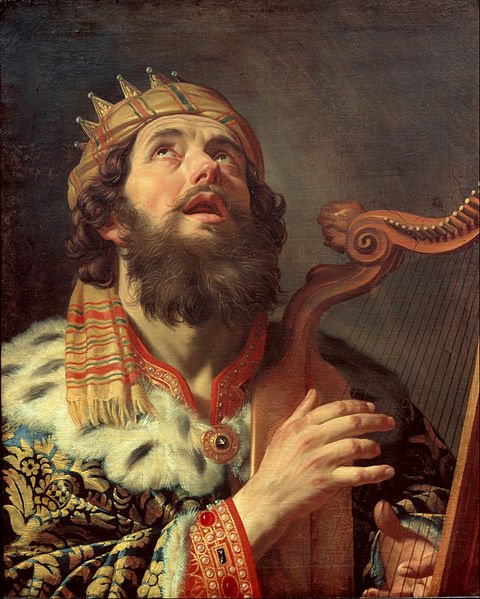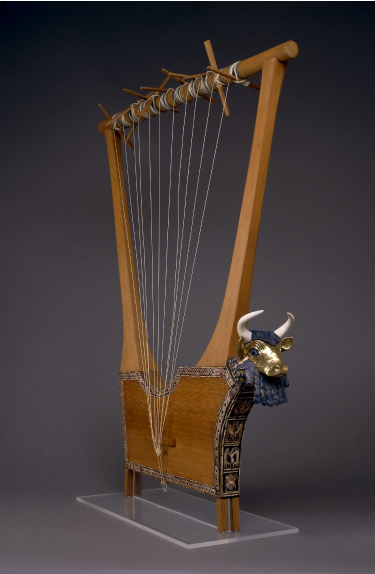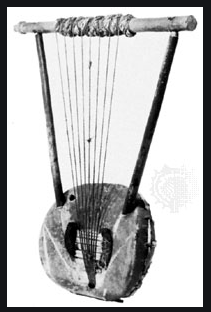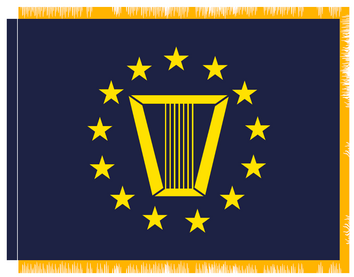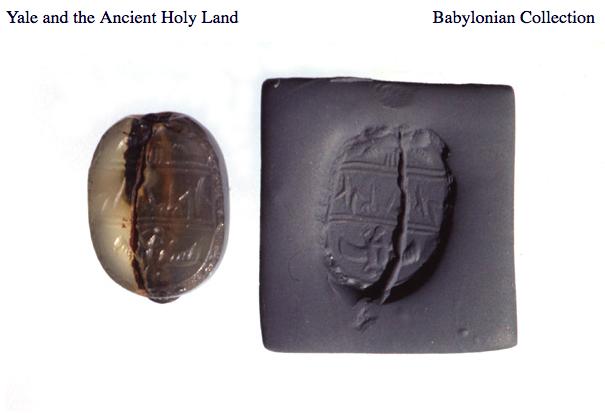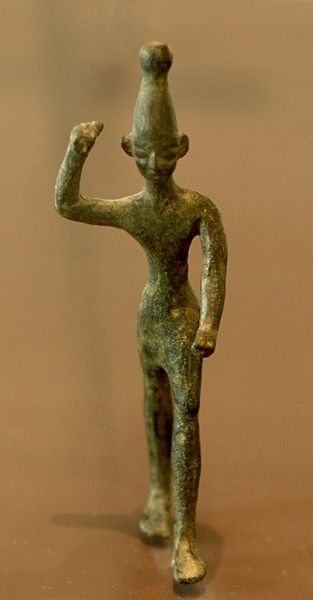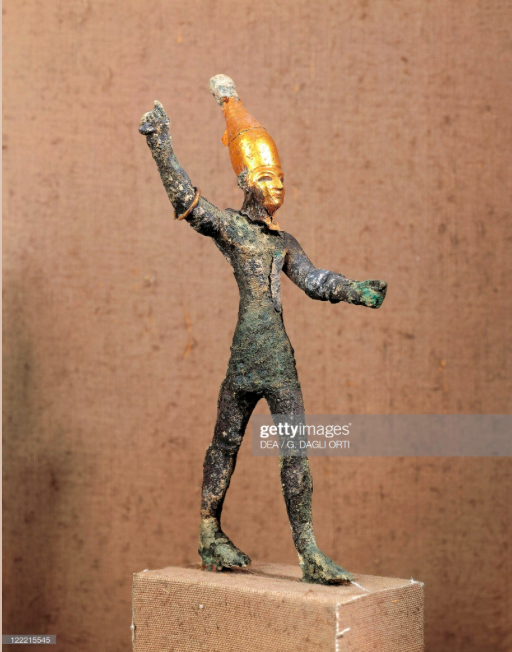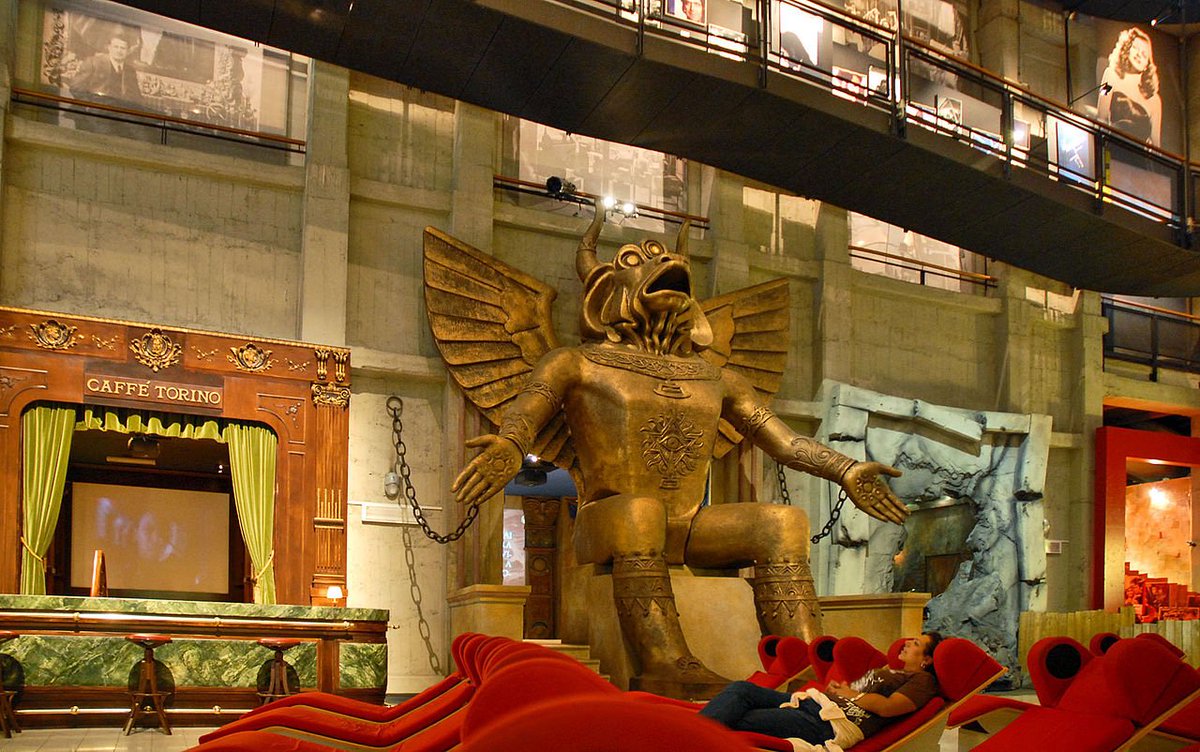Hallelujah: A Thread. https://youtu.be/xq3rpM6-8oU ">https://youtu.be/xq3rpM6-8...
I& #39;m going to do this thread a little bit differently. I& #39;ll just put up pictures and links. No interpretation. Hopefully I& #39;ll get my message through.
Gerard van Honthorst. King David Playing the Harp. Painting. Year: 1622.
https://commons.wikimedia.org/wiki/File:Gerard_van_Honthorst_-_King_David_Playing_the_Harp_-_Google_Art_Project.jpg">https://commons.wikimedia.org/wiki/File...
https://commons.wikimedia.org/wiki/File:Gerard_van_Honthorst_-_King_David_Playing_the_Harp_-_Google_Art_Project.jpg">https://commons.wikimedia.org/wiki/File...
"Most well-known English versions of the Hebrew Bible translate the Hebrew "Hallelujah" (as at Psalm 150:1) as two Hebrew words, generally rendered as & #39;Let us praise& #39; and & #39;the LORD& #39; "
https://en.m.wikipedia.org/wiki/Hallelujah ">https://en.m.wikipedia.org/wiki/Hall...
https://en.m.wikipedia.org/wiki/Hallelujah ">https://en.m.wikipedia.org/wiki/Hall...
"Queen& #39;s Lyre" from the British Museum.
https://www.britishmuseum.org/research/collection_online/collection_object_details.aspx?assetId=29445001&objectId=368339&partId=1">https://www.britishmuseum.org/research/...
https://www.britishmuseum.org/research/collection_online/collection_object_details.aspx?assetId=29445001&objectId=368339&partId=1">https://www.britishmuseum.org/research/...
"The Bull Headed Lyre is one of the oldest stringed instruments ever discovered."
https://en.wikipedia.org/wiki/Bull_Headed_Lyre_of_Ur">https://en.wikipedia.org/wiki/Bull...
https://en.wikipedia.org/wiki/Bull_Headed_Lyre_of_Ur">https://en.wikipedia.org/wiki/Bull...
"The Mesopotamian sun god Utu/Shamash was often taken to assume the form of a bull, particularly in his role at sunrise, and is the figure most frequently described in some cuneiform texts as having a lapis lazuli beard."
https://en.wikipedia.org/wiki/Bull_Headed_Lyre_of_Ur">https://en.wikipedia.org/wiki/Bull...
https://en.wikipedia.org/wiki/Bull_Headed_Lyre_of_Ur">https://en.wikipedia.org/wiki/Bull...
"Utu, later worshipped by East Semitic peoples as Shamash, is the [...] god of the sun, justice, morality, and truth, and the twin of the goddess Inanna, the Queen of Heaven. [...] He was believed to ride through the heavens in his sun chariot"
https://en.wikipedia.org/wiki/Utu ">https://en.wikipedia.org/wiki/Utu&...
https://en.wikipedia.org/wiki/Utu ">https://en.wikipedia.org/wiki/Utu&...
The Mysterious "Hyksos" and the Hebrews: The Semitic Influence in Ancient Egypt
"A variety of new musical instruments, the harp, the lute, the lyre, the oboe and the tambourine, long played in the Mesopotamian milieu, now appear in Egypt."
http://www.imninalu.net/Hyksos.htm ">https://www.imninalu.net/Hyksos.ht...
"A variety of new musical instruments, the harp, the lute, the lyre, the oboe and the tambourine, long played in the Mesopotamian milieu, now appear in Egypt."
http://www.imninalu.net/Hyksos.htm ">https://www.imninalu.net/Hyksos.ht...
"Box lyres were widespread in the ancient Middle East. Giant lyres placed on the ground and played by seated musicians appear in Sumerian reliefs"
https://www.britannica.com/art/lyre ">https://www.britannica.com/art/lyre&...
https://www.britannica.com/art/lyre ">https://www.britannica.com/art/lyre&...
From the book "1 and 2 Samuel", by V. Philips Long:
#v=onepage&q=Canaanite%20asymmetrical%20lyres%20Egypt&f=false">https://books.google.com/books?id=P1czCwAAQBAJ&pg=PT185&lpg=PT185&dq=Canaanite+asymmetrical+lyres+Egypt&source=bl&ots=iU56o7-pDB&sig=ACfU3U2Ml4lQknJchS3RsAe-QrTFD8KfHw&hl=en&sa=X&ved=2ahUKEwiBupyV8eHlAhXyNX0KHfMICyI4ChDoATACegQICRAB #v=onepage&q=Canaanite%20asymmetrical%20lyres%20Egypt&f=false">https://books.google.com/books...
#v=onepage&q=Canaanite%20asymmetrical%20lyres%20Egypt&f=false">https://books.google.com/books?id=P1czCwAAQBAJ&pg=PT185&lpg=PT185&dq=Canaanite+asymmetrical+lyres+Egypt&source=bl&ots=iU56o7-pDB&sig=ACfU3U2Ml4lQknJchS3RsAe-QrTFD8KfHw&hl=en&sa=X&ved=2ahUKEwiBupyV8eHlAhXyNX0KHfMICyI4ChDoATACegQICRAB #v=onepage&q=Canaanite%20asymmetrical%20lyres%20Egypt&f=false">https://books.google.com/books...
From the book "Music in Ancient Israel/Palestine"
"This dagger-phallus symbolism probably derives from the fertility rite that accompanied the Canaanite Baal cult"
#v=onepage&q=Baal&f=false">https://books.google.com/books?id=AXrHi31KN9YC&pg=PA73&lpg=PA73&dq=Canaanite+asymmetrical+lyres+Egypt&source=bl&ots=lhbWGvlNxk&sig=ACfU3U2Pg8CSigboDdy6hsVj04xGry1Akw&hl=en&sa=X&ved=2ahUKEwiBupyV8eHlAhXyNX0KHfMICyI4ChDoATAEegQIBxAB #v=onepage&q=Baal&f=false">https://books.google.com/books...
"This dagger-phallus symbolism probably derives from the fertility rite that accompanied the Canaanite Baal cult"
#v=onepage&q=Baal&f=false">https://books.google.com/books?id=AXrHi31KN9YC&pg=PA73&lpg=PA73&dq=Canaanite+asymmetrical+lyres+Egypt&source=bl&ots=lhbWGvlNxk&sig=ACfU3U2Pg8CSigboDdy6hsVj04xGry1Akw&hl=en&sa=X&ved=2ahUKEwiBupyV8eHlAhXyNX0KHfMICyI4ChDoATAEegQIBxAB #v=onepage&q=Baal&f=false">https://books.google.com/books...
"Ancient DNA reveals fate of the mysterious Canaanites" https://www.sciencemag.org/news/2017/07/ancient-dna-reveals-fate-mysterious-canaanites">https://www.sciencemag.org/news/2017...
"Queen Victoria, convinced that the British royal family was descended from King David, had all her male offspring circumcised. (...)
The tradition continued through Edward VII, the Duke of Windsor and Prince Charles, who was circumcised by Jacob Snowman GP at Buckingham Palace in 1948. His brothers Andrew and Edward also underwent the same procedure." https://www.standard.co.uk/news/londoners-diary/will-william-and-kate-call-for-the-rabbi-8728367.html">https://www.standard.co.uk/news/lond...
"THE possible descent of Queen Victoria from King David was first entered upon in the present day by Rev. F. R A. Glover, M.A. ("England the Remnant of Judah." London, 1861)"
http://www.giveshare.org/israel/grimaldi.html">https://www.giveshare.org/israel/gr...
http://www.giveshare.org/israel/grimaldi.html">https://www.giveshare.org/israel/gr...
Stone of Scone:
"Legends place the origins of the Stone in Biblical times and consider the Stone to be the Stone of Jacob, taken by Jacob while in Haran, (Genesis 28:10–22)."
https://en.wikipedia.org/wiki/Stone_of_Scone">https://en.wikipedia.org/wiki/Ston...
"Legends place the origins of the Stone in Biblical times and consider the Stone to be the Stone of Jacob, taken by Jacob while in Haran, (Genesis 28:10–22)."
https://en.wikipedia.org/wiki/Stone_of_Scone">https://en.wikipedia.org/wiki/Ston...
Stone of Jacob:
"These legends also feature prominently in British Israelism, a set of beliefs that consider the British monarchy as the legitimate heir to the ancient Israelites."
https://en.wikipedia.org/wiki/Stone_of_Jacob">https://en.wikipedia.org/wiki/Ston...
"These legends also feature prominently in British Israelism, a set of beliefs that consider the British monarchy as the legitimate heir to the ancient Israelites."
https://en.wikipedia.org/wiki/Stone_of_Jacob">https://en.wikipedia.org/wiki/Ston...
British Israelism: "belief that the people of the British Isles are "genetically, racially, and linguistically the direct descendants" of the Ten Lost Tribes of ancient Israel.[...] inspired by [...] John Wilson& #39;s 1840 Our Israelitish Origin."
https://en.wikipedia.org/wiki/British_Israelism">https://en.wikipedia.org/wiki/Brit...
https://en.wikipedia.org/wiki/British_Israelism">https://en.wikipedia.org/wiki/Brit...
US Navy SES Flag:
https://www.guidonsandmore.com/useexsefl.html ">https://www.guidonsandmore.com/useexsefl...
https://www.guidonsandmore.com/useexsefl.html ">https://www.guidonsandmore.com/useexsefl...
Army Senior Executive Service flag:
http://aflagshop.com/military-flags/army-flags/army-senior-executive-service.html">https://aflagshop.com/military-...
http://aflagshop.com/military-flags/army-flags/army-senior-executive-service.html">https://aflagshop.com/military-...
DEEP STATE – SHADOW GOVERNMENT REVEALED: SENIOR EXECUTIVE SERVICE
https://patriots4truth.org/2018/03/14/getting-to-know-the-shadow-government/">https://patriots4truth.org/2018/03/1...
https://patriots4truth.org/2018/03/14/getting-to-know-the-shadow-government/">https://patriots4truth.org/2018/03/1...
"The Senior Executive Service (SES) is a position classification in the civil service of the United States federal government, equivalent to general officer or flag officer ranks in the U.S. Armed Forces. (...)
It was created in 1979 when the Civil Service Reform Act of 1978 went into effect under President Jimmy Carter."
https://en.wikipedia.org/wiki/Senior_Executive_Service_(United_States)">https://en.wikipedia.org/wiki/Seni...
https://en.wikipedia.org/wiki/Senior_Executive_Service_(United_States)">https://en.wikipedia.org/wiki/Seni...
"According to the Office of Personnel Management, the SES was designed to be a corps of executives selected for their leadership qualifications, (...)
serving in key positions just below the top Presidential appointees as a link between them and the rest of the Federal (civil service) workforce."
https://en.wikipedia.org/wiki/Senior_Executive_Service_(United_States)">https://en.wikipedia.org/wiki/Seni...
https://en.wikipedia.org/wiki/Senior_Executive_Service_(United_States)">https://en.wikipedia.org/wiki/Seni...
"What does the SES insignia symbolize?
The SES insignia or emblem represents a keystone -- the center stone that holds all the stones of an arch in place. This represents the critical role of the SES as a central coordinating point between Government& #39;s political leadership (...)
The SES insignia or emblem represents a keystone -- the center stone that holds all the stones of an arch in place. This represents the critical role of the SES as a central coordinating point between Government& #39;s political leadership (...)
which sets the political agenda and the line workers who implement it. Members of the SES translate that political agenda into reality. (...)
The upright lines in the center of the keystone represent a column in which individual SES members are united into a single leadership corps. (...)
There is no particular symbolism to the number of lines, which has varied over the years with different iterations of the logo. The SES insignia may not be modified."
https://www.opm.gov/faqs/QA.aspx?fid=fcd37029-d607-4fec-a8d6-faecbdb08eef&pid=40caa6fb-5788-4da6-812e-aa0fe8937cd8">https://www.opm.gov/faqs/QA.a...
https://www.opm.gov/faqs/QA.aspx?fid=fcd37029-d607-4fec-a8d6-faecbdb08eef&pid=40caa6fb-5788-4da6-812e-aa0fe8937cd8">https://www.opm.gov/faqs/QA.a...
Very important link:
https://www.esd.whs.mil/Portals/54/Documents/DD/issuances/dodi/100515p.pdf">https://www.esd.whs.mil/Portals/5...
https://www.esd.whs.mil/Portals/54/Documents/DD/issuances/dodi/100515p.pdf">https://www.esd.whs.mil/Portals/5...
"DOJ SES 500 DISCOVERED – THE PAYMASTERS OF THE DEEP STATE" https://aim4truth.org/2018/03/22/doj-ses-500-discovered-the-paymasters-of-the-deep-state/">https://aim4truth.org/2018/03/2...
"Syria, Ugarit, Statue representing the God Baal, bronze and gold"
https://www.gettyimages.co.uk/detail/news-photo/syria-ugarit-statue-representing-the-god-baal-bronze-and-news-photo/122215545">https://www.gettyimages.co.uk/detail/ne...
https://www.gettyimages.co.uk/detail/news-photo/syria-ugarit-statue-representing-the-god-baal-bronze-and-news-photo/122215545">https://www.gettyimages.co.uk/detail/ne...
"The myth, by recounting the conquest of Baal over his cosmic enemies, both celebrates the institution of divine human kingship and explains that rule by a warrior king is necessary to bring order to both earth and the heavenly abode." https://www.metmuseum.org/toah/hd/cana/hd_cana.htm">https://www.metmuseum.org/toah/hd/c...
"Finally, there are passages within the Old Testament in which the Phoenicians are referred to as the Canaanites, where they are portrayed in a particularly negative light". https://www.ancient.eu/Phoenician_Religion/">https://www.ancient.eu/Phoenicia...
ANCIENT SEALS FROM THE BABYLONIAN COLLECTION:
"could conceivably be read as LKNRMLK: & #39;for the lyre of (the deity) Moloch& #39; or & #39;belonging to the lyre of (the ) king& #39;."
https://www.library.yale.edu/judaica/site/exhibits/holyland/BabylonianCollection.html">https://www.library.yale.edu/judaica/s...
"could conceivably be read as LKNRMLK: & #39;for the lyre of (the deity) Moloch& #39; or & #39;belonging to the lyre of (the ) king& #39;."
https://www.library.yale.edu/judaica/site/exhibits/holyland/BabylonianCollection.html">https://www.library.yale.edu/judaica/s...
"In the Bible, Baal (also rendered Baʿal) was an important Canaanite god, often portrayed as the primary enemy of the Hebrew God Yahweh. The Semitic word "baal" (meaning & #39;"Lord") was also used to refer to various deities of the Levant."
https://www.newworldencyclopedia.org/entry/Baal ">https://www.newworldencyclopedia.org/entry/Baa...
https://www.newworldencyclopedia.org/entry/Baal ">https://www.newworldencyclopedia.org/entry/Baa...
Was Moloch really Ba’al, the Ancient God Who Demanded Child Sacrifice?
"One suggested identity for Molech is the Canaanite deity, Ba’al-Hadad or Hadad. Hadad was considered the king of the gods by the ancient Canaanites. (...)
"One suggested identity for Molech is the Canaanite deity, Ba’al-Hadad or Hadad. Hadad was considered the king of the gods by the ancient Canaanites. (...)
Evidence that Moloch can be identified with him comes from the fact that the pagan alters in the valley of Ben-Hinnom where children were sacrificed are also described as altars to Ba’al by the prophet Jeremiah."
https://www.ancient-origins.net/myths-legends-asia/identity-moloch-0011457">https://www.ancient-origins.net/myths-leg...
https://www.ancient-origins.net/myths-legends-asia/identity-moloch-0011457">https://www.ancient-origins.net/myths-leg...
"One stone carving of Baal depicts him wielding a club (thunder) in his raised right hand and a spear (lightning) in his left hand. Baal is also portrayed as a bull, an ancient symbol of fertility."
https://israelmyglory.org/article/the-battle-of-the-gods-paganism%EF%BB%BFs-seduction-of-israel/">https://israelmyglory.org/article/t...
https://israelmyglory.org/article/the-battle-of-the-gods-paganism%EF%BB%BFs-seduction-of-israel/">https://israelmyglory.org/article/t...
"While no particular form of Moloch is known due to the ambiguity of his origin, he is usually depicted in the form of a calf or an ox, or else as a man with the head of a bull. (...)
The figure of Moloch has been an object of fascination over the centuries, and has been used to bolster metaphorical and thematic elements within numerous modern works of art, film, and literature."
https://www.newworldencyclopedia.org/entry/Moloch ">https://www.newworldencyclopedia.org/entry/Mol...
https://www.newworldencyclopedia.org/entry/Moloch ">https://www.newworldencyclopedia.org/entry/Mol...
"Moloch, also spelled Molech, a Canaanite deity associated in biblical sources with the practice of child sacrifice. The name derives from combining the consonants of the Hebrew melech (“king”) (...)
with the vowels of boshet (“shame”), the latter often being used in the Old Testament as a variant name for the popular god Baal (“Lord”)." https://www.britannica.com/topic/Moloch-ancient-god">https://www.britannica.com/topic/Mol...
"In the Hebrew Bible, Moloch is presented as a foreign deity who was at times illegitimately given a place in Israel’s worship as a result of the syncretistic policies of certain apostate kings. (...)
The laws given to Moses by God expressly forbade the Jews to do what was done in Egypt or in Canaan." https://www.britannica.com/topic/Moloch-ancient-god">https://www.britannica.com/topic/Mol...
Moloch:
Moloch statue from Giovanni Pastrone& #39;s Cabiria (1914), National Museum of Cinema (Turin).
Moloch statue from Giovanni Pastrone& #39;s Cabiria (1914), National Museum of Cinema (Turin).
"[T}he Narmer Palette provides one of the earliest known depictions of an Egyptian king."
https://en.wikipedia.org/wiki/Narmer_Palette">https://en.wikipedia.org/wiki/Narm...
https://en.wikipedia.org/wiki/Narmer_Palette">https://en.wikipedia.org/wiki/Narm...
"Narmer was an ancient Egyptian king of the Early Dynastic Period, circa 3150-3100 BC. [...] Some consider him the unifier of Egypt and founder of the First Dynasty, and in turn the first king of a unified Egypt."
https://en.wikipedia.org/wiki/Narmer ">https://en.wikipedia.org/wiki/Narm...
https://en.wikipedia.org/wiki/Narmer ">https://en.wikipedia.org/wiki/Narm...
"An Egyptian presence in Canaan predates Narmer, but after about 200 years of active presence in Canaan [...] best demonstrated by the presence of pottery made from Egyptian Nile clay and found in Canaan (...)
as well as pottery made from local clay, but in the Egyptian style. The latter suggests the existence of Egyptian colonies rather than just trade."
#Narmer_in_Canaan">https://en.wikipedia.org/wiki/Narmer #Narmer_in_Canaan">https://en.wikipedia.org/wiki/Narm...
#Narmer_in_Canaan">https://en.wikipedia.org/wiki/Narmer #Narmer_in_Canaan">https://en.wikipedia.org/wiki/Narm...
Moses on the 1518 baptismal font in St. Amandus, Bad Urach, Germany, by the sculptor Christoph von Urach.
Moses. c. 1513–1515. Italian High Renaissance. Michelangelo Buonarroti. Housed in the church of San Pietro in Vincoli in Rome.
"The depiction of a horned Moses stems from the description of Moses& #39; face as "cornuta" ("horned") in the Latin Vulgate translation of the passage found at Exodus chapter 34, [...] in which Moses returns to the people after receiving the commandments for the second time. (...)
[...] This was Jerome& #39;s effort to faithfully translate the difficult, original Hebrew text, which uses the term קָרַ֛ן, qāran (based on the root, קָ֫רֶן qeren, which often means "horn"); the term is now interpreted to mean "shining" or "emitting rays" "
https://en.wikipedia.org/wiki/Moses_(Michelangelo)">https://en.wikipedia.org/wiki/Mose...
https://en.wikipedia.org/wiki/Moses_(Michelangelo)">https://en.wikipedia.org/wiki/Mose...
"Moses [...] was a prophet according to the teachings of the Abrahamic religions. Scholarly consensus sees Moses as a legendary figure and not a historical person, while retaining the possibility that a Moses-like figure existed."
#Prophet_and_deliverer_of_Israel">https://en.wikipedia.org/wiki/Moses #Prophet_and_deliverer_of_Israel">https://en.wikipedia.org/wiki/Mose...
#Prophet_and_deliverer_of_Israel">https://en.wikipedia.org/wiki/Moses #Prophet_and_deliverer_of_Israel">https://en.wikipedia.org/wiki/Mose...
"Rabbinical Judaism calculated a lifespan of Moses corresponding to 1391–1271 BCE [...] Jerome gives 1592 BCE,[...] and James Ussher 1571 BCE as his birth year."
#Prophet_and_deliverer_of_Israel">https://en.wikipedia.org/wiki/Moses #Prophet_and_deliverer_of_Israel">https://en.wikipedia.org/wiki/Mose...
#Prophet_and_deliverer_of_Israel">https://en.wikipedia.org/wiki/Moses #Prophet_and_deliverer_of_Israel">https://en.wikipedia.org/wiki/Mose...
Golden Calf:
"Moses burnt the golden calf in a fire, ground it to powder, scattered it on water, and forced the Israelites to drink it."
https://en.wikipedia.org/wiki/Golden_calf">https://en.wikipedia.org/wiki/Gold...
"Moses burnt the golden calf in a fire, ground it to powder, scattered it on water, and forced the Israelites to drink it."
https://en.wikipedia.org/wiki/Golden_calf">https://en.wikipedia.org/wiki/Gold...
"Bull worship was common in many cultures. In Egypt, whence according to the Exodus narrative the Hebrews had recently come, the Apis Bull was a comparable object of worship, which some believe the Hebrews were reviving in the wilderness (...)
alternatively, some believe the God of Israel was associated with or pictured as a calf/bull deity through the process of religious assimilation and syncretism. (...)
Among the Egyptians& #39; and Hebrews& #39; neighbors in the ancient Near East and in the Aegean, the aurochs, the wild bull, was widely worshipped, often as the Lunar Bull and as the creature of El."
https://en.wikipedia.org/wiki/Golden_calf">https://en.wikipedia.org/wiki/Gold...
https://en.wikipedia.org/wiki/Golden_calf">https://en.wikipedia.org/wiki/Gold...
"Later at Mount Sinai, Moses and the elders entered into a covenant, by which Israel would become the people of YHWH, obeying his laws, and YHWH would be their god."
https://en.wikipedia.org/wiki/Moses ">https://en.wikipedia.org/wiki/Mose...
https://en.wikipedia.org/wiki/Moses ">https://en.wikipedia.org/wiki/Mose...
"The Hebrew Bible gives the impression that the Jerusalem temple was always meant to be the central or even sole temple of Yahweh, but this was not the case: [...]
the earliest known Israelite place of worship is a 12th-century open-air altar in the hills of Samaria featuring a bronze bull reminiscent of Canaanite "Bull-El" (El in the form of a bull)"
https://en.wikipedia.org/wiki/Yahweh ">https://en.wikipedia.org/wiki/Yahw...
https://en.wikipedia.org/wiki/Yahweh ">https://en.wikipedia.org/wiki/Yahw...
"His worship presumably involved sacrifice, but many scholars have concluded that the rituals detailed in Leviticus 1–16, with their stress on purity and atonement, were introduced only after the Babylonian exile, and that in reality any head of a family was able to offer (...)
sacrifice as occasion demanded. (A number of scholars have also drawn the conclusion that infant sacrifice, whether to the underworld deity (...)
Molech or to Yahweh himself, was a part of Israelite/Judahite religion until the reforms of King Josiah in the late 7th century BCE)."
https://en.wikipedia.org/wiki/Yahweh ">https://en.wikipedia.org/wiki/Yahw...
https://en.wikipedia.org/wiki/Yahweh ">https://en.wikipedia.org/wiki/Yahw...
"Judaism prohibits any form of idolatry. According to its commandments, neither is worship of foreign gods in any form or through icons allowed, nor is idolatrous worship of the God of Israel permitted. (...)
[...] The commandments in the Hebrew Bible against idolatry forbade the practices and gods of ancient Akkad, Mesopotamia, and Egypt. (...)
The Hebrew Bible states that God has no shape or form, is utterly incomparable, is everywhere and cannot be represented in a physical form of an idol."
#Abrahamic_religions">https://en.wikipedia.org/wiki/Idolatry #Abrahamic_religions">https://en.wikipedia.org/wiki/Idol...
#Abrahamic_religions">https://en.wikipedia.org/wiki/Idolatry #Abrahamic_religions">https://en.wikipedia.org/wiki/Idol...
"Yahweh-worship was famously aniconic, meaning that the god was not depicted by a statue or other image.This is not to say that he was not represented in some symbolic form, and early Israelite worship probably focused on standing stones, but according to the Biblical texts (...)
the temple in Jerusalem featured Yahweh& #39;s throne in the form of two cherubim, their inner wings forming the seat and a box (the Ark of the Covenant) as a footstool, while the throne itself was empty. No satisfactory explanation of Israelite aniconism has been advanced, (...)
and a number of recent scholars have argued that Yahweh was in fact represented prior to the reforms of Hezekiah and Josiah late in the monarchic period".
https://en.wikipedia.org/wiki/Yahweh ">https://en.wikipedia.org/wiki/Yahw...
https://en.wikipedia.org/wiki/Yahweh ">https://en.wikipedia.org/wiki/Yahw...
"Pre-exilic Israel, like its neighbours, was polytheistic, and Israelite monotheism was the result of unique historical circumstances. (...)
The original god of Israel was El, as the name demonstrates—its probable meaning is "may El rule" or some other sentence-form involving the name of El."
https://en.wikipedia.org/wiki/Yahweh ">https://en.wikipedia.org/wiki/Yahw...
https://en.wikipedia.org/wiki/Yahweh ">https://en.wikipedia.org/wiki/Yahw...
"The Phoenician Baʿal is generally identified with either El or Dagan."
#El">https://en.wikipedia.org/wiki/Baal #El ">https://en.wikipedia.org/wiki/Baal...
#El">https://en.wikipedia.org/wiki/Baal #El ">https://en.wikipedia.org/wiki/Baal...
"Baal [...] was a title and honorific meaning "owner," "lord" in the Northwest Semitic languages spoken in the Levant during antiquity. (...)
From its use among people, it came to be applied to gods. Scholars previously associated the theonym with solar cults and with a variety of unrelated patron deities".
#El">https://en.wikipedia.org/wiki/Baal #El ">https://en.wikipedia.org/wiki/Baal...
#El">https://en.wikipedia.org/wiki/Baal #El ">https://en.wikipedia.org/wiki/Baal...
"The title baʿal was a synonym in some contexts of the Hebrew adon ("Lord") and adonai ("My Lord") still used as aliases of the Lord of Israel Yahweh."
#Yahweh">https://en.wikipedia.org/wiki/Baal #Yahweh">https://en.wikipedia.org/wiki/Baal...
#Yahweh">https://en.wikipedia.org/wiki/Baal #Yahweh">https://en.wikipedia.org/wiki/Baal...
"Aniconism was shaped in monotheist religions by theological considerations and historical contexts. It emerged as a corollary of seeing God& #39;s position as the ultimate power holder, and the need to defend this unique status against competing external and internal forces, (...)
such as pagan idols and critical humans. Idolatry was seen as a threat to uniqueness, and one way that prophets and missionaries chose to fight it was through the prohibition of physical representations."
https://en.wikipedia.org/wiki/Aniconism ">https://en.wikipedia.org/wiki/Anic...
https://en.wikipedia.org/wiki/Aniconism ">https://en.wikipedia.org/wiki/Anic...
Was Moses’ Name Egyptian?
"Why would an Egyptian princess choose a Hebrew name? Did this daughter of Pharaoh know Hebrew? [...] If the name is not Hebrew, then what is it? Where does it come from?"
https://www.bibleodyssey.org/en/people/related-articles/was-moses-name-egyptian">https://www.bibleodyssey.org/en/people...
"Why would an Egyptian princess choose a Hebrew name? Did this daughter of Pharaoh know Hebrew? [...] If the name is not Hebrew, then what is it? Where does it come from?"
https://www.bibleodyssey.org/en/people/related-articles/was-moses-name-egyptian">https://www.bibleodyssey.org/en/people...
"[T]he Hebrew name Moses stands alone in the biblical text; it has no god’s name attached to it. Scholars have debated whether it may have once included a god’s name that was later dropped."
https://www.bibleodyssey.org/en/people/related-articles/was-moses-name-egyptian">https://www.bibleodyssey.org/en/people...
https://www.bibleodyssey.org/en/people/related-articles/was-moses-name-egyptian">https://www.bibleodyssey.org/en/people...
"If the name is Egyptian [...] this then would seem to conflict with the Hebrew etymology. Did the biblical author/editor know of its Egyptian origin?"
https://www.bibleodyssey.org/en/people/related-articles/was-moses-name-egyptian">https://www.bibleodyssey.org/en/people...
https://www.bibleodyssey.org/en/people/related-articles/was-moses-name-egyptian">https://www.bibleodyssey.org/en/people...
"Much of this debate rests on the assumption that there was a biblical figure named Moses who lived in Egypt in the 13th century, one that many scholars are increasingly less inclined to accept".
https://www.bibleodyssey.org/en/people/related-articles/was-moses-name-egyptian">https://www.bibleodyssey.org/en/people...
https://www.bibleodyssey.org/en/people/related-articles/was-moses-name-egyptian">https://www.bibleodyssey.org/en/people...
"Akhenaten& #39;s status as a religious revolutionary has led to much speculation, ranging from scholarly hypotheses to non-academic fringe theories. (...)
Although some believe the religion he introduced was mostly monotheistic, many others see Akhenaten as a practitioner of an Aten monolatry, (...)
as he did not actively deny the existence of other gods; he simply refrained from worshiping any but the Aten while expecting the people to worship not Aten but him."
#Implementation_of_Atenism_and_later_collapse">https://en.wikipedia.org/wiki/Akhenaten #Implementation_of_Atenism_and_later_collapse">https://en.wikipedia.org/wiki/Akhe...
#Implementation_of_Atenism_and_later_collapse">https://en.wikipedia.org/wiki/Akhenaten #Implementation_of_Atenism_and_later_collapse">https://en.wikipedia.org/wiki/Akhe...
"The idea that Akhenaten was the pioneer of a monotheistic religion that later became Judaism has been considered by various scholars. One of the first to mention this was Sigmund Freud, the founder of psychoanalysis, in his book Moses and Monotheism."
#Implementation_of_Atenism_and_later_collapse">https://en.wikipedia.org/wiki/Akhenaten #Implementation_of_Atenism_and_later_collapse">https://en.wikipedia.org/wiki/Akhe...
#Implementation_of_Atenism_and_later_collapse">https://en.wikipedia.org/wiki/Akhenaten #Implementation_of_Atenism_and_later_collapse">https://en.wikipedia.org/wiki/Akhe...
"However Akhenaten& #39;s case may be different through the emphasis which he placed on the heavenly father and son relationship. Akhenaten described himself as being "thy son who came forth from thy limbs", "thy child", "the eternal son that came forth from the Sun-Disc", (...)
and "thine only son that came forth from thy body".
#Implementation_of_Atenism_and_later_collapse">https://en.wikipedia.org/wiki/Akhenaten #Implementation_of_Atenism_and_later_collapse">https://en.wikipedia.org/wiki/Akhe...
#Implementation_of_Atenism_and_later_collapse">https://en.wikipedia.org/wiki/Akhenaten #Implementation_of_Atenism_and_later_collapse">https://en.wikipedia.org/wiki/Akhe...
"The close relationship between father and son is such that only the king truly knows the heart of "his father", and in return his father listens to his son& #39;s prayers. He is his father& #39;s image on earth, and as Akhenaten is king on earth, his father is king in heaven. (...)
As high priest, prophet, king and divine he claimed the central position in the new religious system. Because only he knew his father& #39;s mind and will, Akhenaten alone could interpret that will for all mankind with true teaching coming only from him."
#Implementation_of_Atenism_and_later_collapse">https://en.wikipedia.org/wiki/Akhenaten #Implementation_of_Atenism_and_later_collapse">https://en.wikipedia.org/wiki/Akhe...
#Implementation_of_Atenism_and_later_collapse">https://en.wikipedia.org/wiki/Akhenaten #Implementation_of_Atenism_and_later_collapse">https://en.wikipedia.org/wiki/Akhe...
Gonna put a cap on this thread. Again, with one of my favorite history songs. Will continue with some of the ideas here in my unfinished Y Thread. Stay tuned!!!
https://youtu.be/xAOMEqMXiXI ">https://youtu.be/xAOMEqMXi...

 Read on Twitter
Read on Twitter